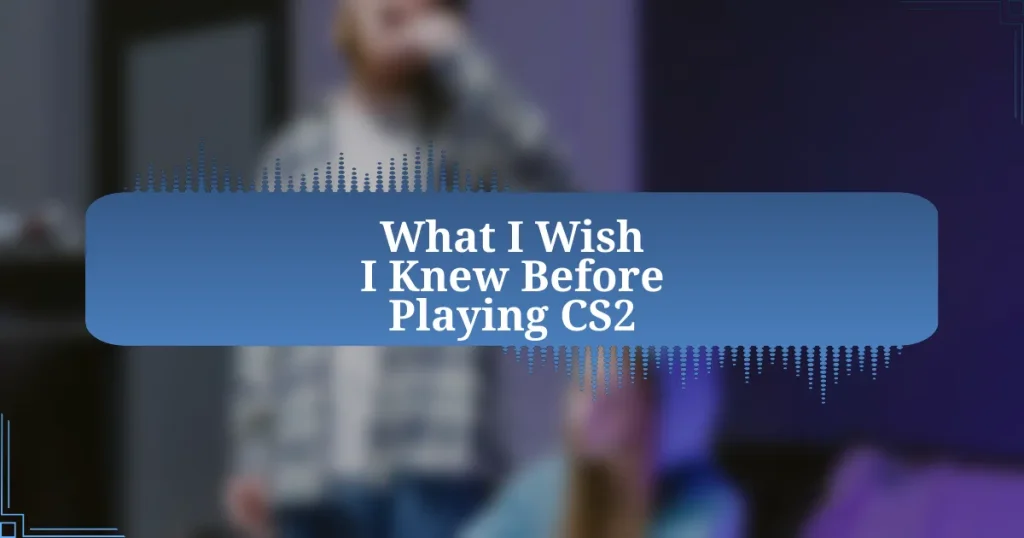Key takeaways:
- Counter Strike 2 introduces the Source 2 engine, enhancing graphics and realism, enhancing gameplay immersion.
- The implementation of dynamic maps and new smoke mechanics adds strategic depth, requiring players to adapt their tactics.
- Effective communication and understanding map layouts are crucial for teamwork and success in matches.
- Common mistakes include overcommitting to fights and poor economy management, both of which can significantly affect performance.

Introduction to Counter Strike 2
Counter Strike 2, the latest installment in the iconic Counter Strike series, has taken the gameplay and environment we know and love to new heights. With enhanced graphics and refined mechanics, I remember the first time I launched the game and couldn’t help but feel a rush of nostalgia mixed with excitement—would it live up to my expectations?
The shift to a more dynamic system, where each map feels alive with detail, is something I wasn’t prepared for. Walking through these meticulously designed levels, I sometimes find myself pausing, taking in the environment and thinking, “How did we get here?” These little moments remind us that this isn’t just about gameplay—it’s about immersing ourselves in a world that continues to evolve and challenge our skills.
As a long-time fan, the introduction of new strategies and tactical elements brought me back to the days of learning the basics. It was both thrilling and a bit intimidating, sparking the question: how do I adapt my playstyle to these changes? That sense of challenge is precisely why I keep coming back, eager to explore what Counter Strike 2 has in store for both veterans and newcomers alike.

Key Features of CS2
The introduction of the Source 2 engine is a game-changer for CS2. I remember the first time I experienced the stunning lighting and textures that made each environment feel iconic yet fresh. It’s not just about how it looks; it’s about how those enhancements create a sense of realism that pulls players deeper into the action.
Another standout feature is the new smoke mechanics, which radically alter tactical play. I can recall a moment where my team used smoke grenades to block enemy vision and set up a perfect ambush. This small yet significant change encourages players to think creatively about their approach, transforming a once straightforward mechanic into a tool for strategic depth. Have you ever wondered how using smoke can completely shift the tide of a match? With the right execution, it absolutely can.
Moreover, the inclusion of dynamic maps adds an unpredictable element to gameplay. I was taken aback during a match when the layout unexpectedly changed mid-game—it threw off my strategy entirely! This feature keeps every match feeling unique and forces players to adapt on the fly, continuously redefining how you approach each round. It’s exhilarating to think about the possibilities unfolding with every match.
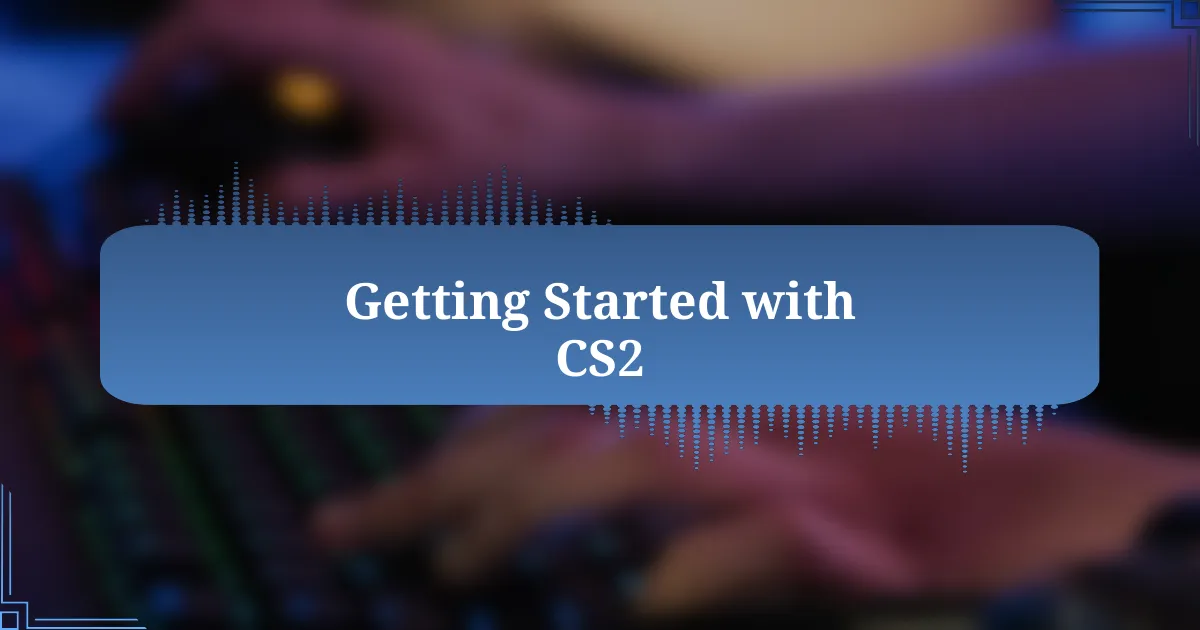
Getting Started with CS2
Getting started with CS2 can seem daunting, but I found that immersing myself in the basics made all the difference. Initially, I spent time in offline mode, just getting a feel for the weapons and mechanics. This allowed me to make mistakes without the pressure of a live match, and I discovered how rewarding it is to see steady improvement.
Another tip is to familiarize yourself with the map layouts early on. I distinctly remember being lost in my first few matches, running around without any idea of where to go. Once I dedicated time to exploring maps, I felt immensely more confident navigating the terrain and laying traps for opponents. Understanding choke points and vantage areas has since become second nature to me—doesn’t it feel great when you know exactly where to position yourself?
Finally, connecting with the community has been invaluable. Whether it’s through joining forums or watching gameplay videos, hearing tips and strategies from experienced players really enhanced my understanding of the game. I recall a discussion about crosshair placement techniques that immediately improved my aim. So, don’t hesitate to reach out and learn from others—there’s a wealth of knowledge waiting for you.
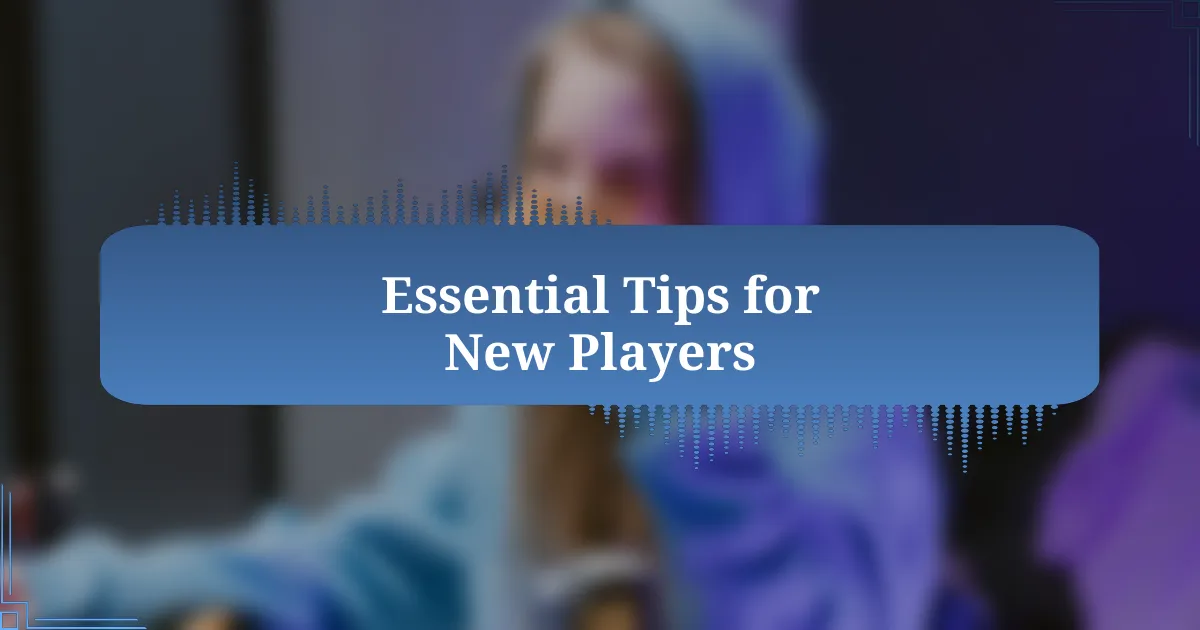
Essential Tips for New Players
One key tip for new players is to experiment with different weapons and find what feels comfortable for you. In my early days, I clung to the AK-47 because I thought it was the best choice, but I soon realized that the M4A4 suited my playstyle much better. Have you ever felt the struggle of not landing shots? It was frustrating for me until I discovered the importance of weapon choice and how it can drastically impact your performance.
Another essential aspect to consider is your positioning during matches. I used to think that charging headfirst into combat was the best strategy, but I learned the hard way that positioning can be the deciding factor in a firefight. Playing with a more tactical mindset transformed my gameplay. I remember a match where holding an angle allowed me to take out several opponents before they even knew I was there. How thrilling it is to catch your enemies off guard!
Lastly, mastering communication with your team cannot be overstated. Early on, I often played like a lone wolf, but I soon realized that sharing information about enemy positions and strategies led to our team’s victories. In one memorable game, I called out an enemy’s location, leading to a well-coordinated ambush that changed the course of the match. Don’t underestimate the power of teamwork; after all, you win together or lose together!
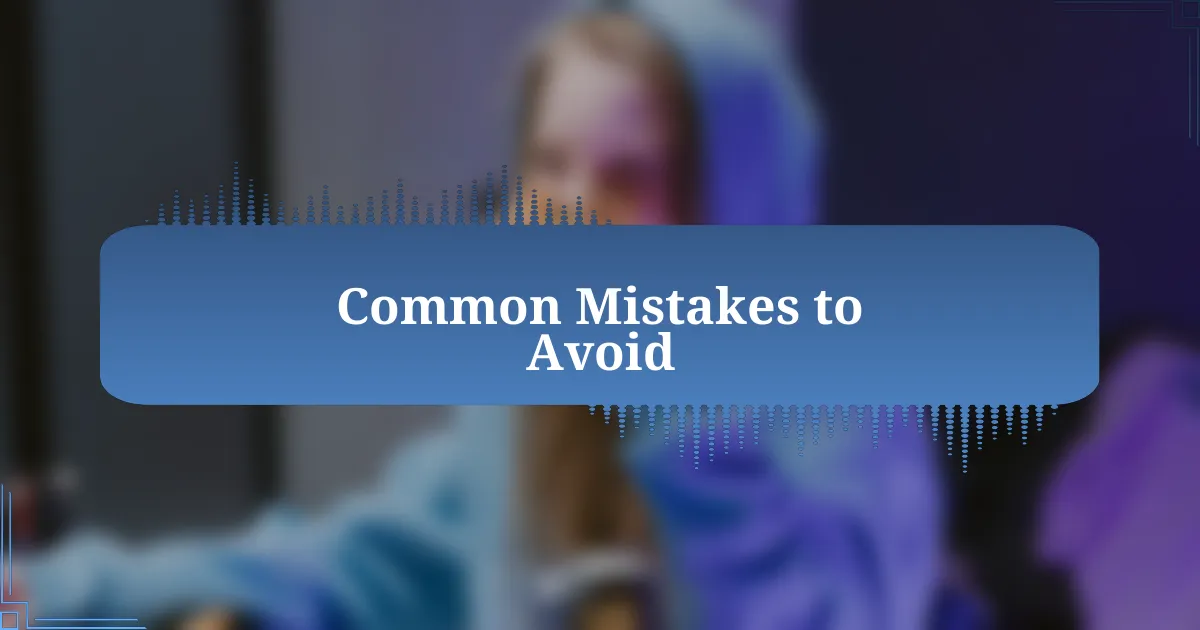
Common Mistakes to Avoid
One common mistake I often see new players make is overcommitting to fights. I remember a particularly tense match where I thought I could take on three enemies solo. Spoiler alert: it didn’t end well. Instead of charging in recklessly, consider backing off and regrouping with your team. Sometimes, the smartest move is to preserve your life for a better opportunity.
Another pitfall is ignoring the importance of economy management. Early in my CS2 journey, I would spend all my money on high-tier weapons at the start of each round, only to find myself broke and unable to buy anything when it mattered most. It took a few painful lessons before I grasped that saving for a good round was crucial. Have you ever been in a situation where your team could have benefited from a full purchase? Trust me, learning to manage your in-game money can really make a difference in your team’s success.
Lastly, don’t forget about the power of the game’s sound design. Initially, I was so focused on visuals that I often missed audio cues, like footsteps or grenade throws. I had a moment in a close match when I could hear an enemy reloading but was too fixated on spotting them. When I finally started to pay attention to what I could hear, I was able to anticipate opponents’ movements. How often do you check your sound settings before diving into a game? Well, I can tell you that those little adjustments can enhance your awareness and elevate your gameplay significantly.
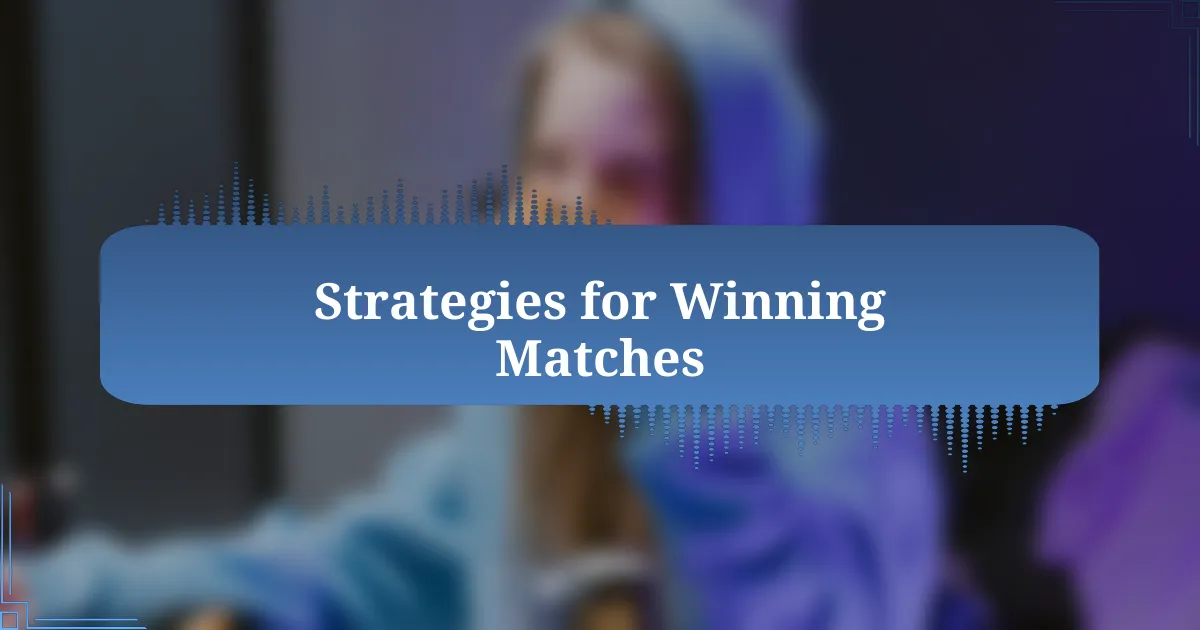
Strategies for Winning Matches
When it comes to winning matches, communication with your team is absolutely vital. Early on, I recall a game where my teammates went silent, and it felt like a gamble every time I pushed forward. By just sharing information about enemy positions or suggesting strategies, I transformed our gameplay. Have you ever felt the frustration of playing with a disjointed team? I bet if you communicate more effectively, you’ll notice a significant difference in your coordination and success.
Another strategy that has proven invaluable for me is mastering the map. Each map has its nuances, including key choke points and common hiding spots. I remember spending a few hours just learning the layout of Dust II, which paid off handsomely. Knowing where to find cover or the best angles to hold can really tilt the odds in your favor. How well do you know the maps you’re playing on? Taking the time to familiarize yourself can empower you to make informed decisions throughout the match.
Lastly, adapting your playstyle based on your team’s dynamics can be a game-changer. There was a match where I played aggressively, but once I noticed my team thrived on a more defensive approach, I switched tactics. It felt like flipping a switch; suddenly, we were working in harmony. Have you ever found that adjusting to your teammates’ strengths leads to victory? Always be open to change; it could turn the tide of a competitive match.
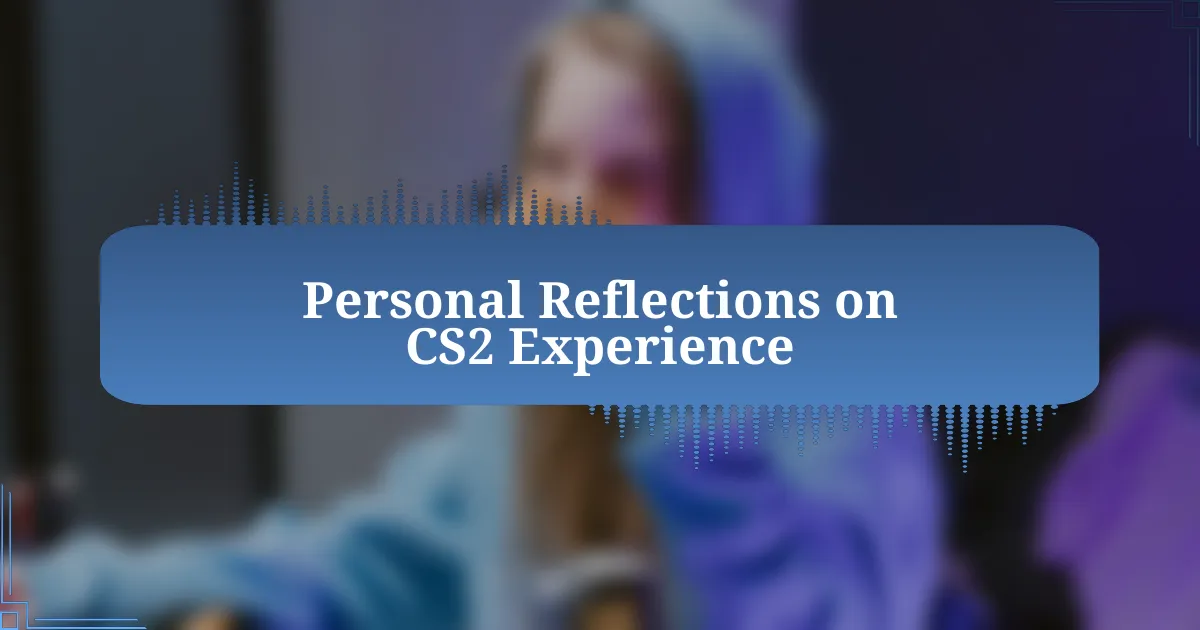
Personal Reflections on CS2 Experience
Playing CS2 has been a rollercoaster of emotions for me. I remember my first few matches were filled with excitement, but also frustration—mainly because I underestimated the importance of pre-game preparation. I would jump right into matches without understanding my loadout or the map strategies. Have you ever felt overwhelmed by the details, only to realize that a little bit of preparation can go a long way? That moment when I started actively researching loadouts and practicing my aim turned my gameplay around significantly.
One standout memory was during a tense match where I faced off against a particularly skilled opponent. I was on the verge of giving up when I remembered a tip about staying calm under pressure. Instead of panicking, I took a deep breath and focused on my positioning. That single moment transformed my fear into focus. Have you experienced a similar shift in a high-stress game? It taught me that mental resilience can truly influence the outcome, as much as technical skills do.
As I reflect on my CS2 journey, I realize the power of self-improvement in shaping my experience. I decided to record my gameplay to analyze my mistakes. Watching myself play was eye-opening; I could see where I rushed, or held back unnecessarily. Has anyone else found that self-review can illuminate paths for growth? Embracing this approach not only fine-tuned my skills but also deepened my appreciation for the game itself, turning each moment into a learning opportunity.











